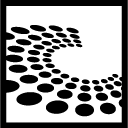27C3 - Version 1.6.3
27th Chaos Communication Congress
We come in peace
| Referenten | |
|---|---|
|
|
Marcus Nutzinger |
|
|
Rainer Poisel |
| Programm | |
|---|---|
| Tag | Day 2 - 2010-12-28 |
| Raum | Saal 2 |
| Beginn | 23:00 |
| Dauer | 01:00 |
| Info | |
| ID | 4138 |
| Veranstaltungstyp | Vortrag |
| Track | Hacking |
| Sprache der Veranstaltung | englisch |
| Feedback | |
|---|---|
|
Haben Sie diese Veranstaltung besucht? Feedback abgeben |
Secure communications below the hearing threshold
Improved approaches for auditive steganography

Auditive steganography allows for various usage scenarios. In our project we focused on hidden communications in VoIP and GSM in which voice data is typically compressed and transmitted in realtime. A framework has been developed to meet these requirements, providing interfaces for robust steganographic algorithms.
The need for steganography has arisen from scenarios that forbid the application of cryptographic algorithms for secure communications. Countries that made secret message exchange a delict are an example for such scenarios. The LSB algorithm used by many open- and closed-source projects is insecure, as its application can be statistically detected. Therefore, we focused on alternate approaches which are more robust against operations on the bit-level, such as compression, D/A-, A/D-conversion and channel idiosyncrasies, such as spread spectrum steganography in time and frequency domain.
Secure and hidden communications demand more than an embedding algorithm. Involved elements include:
- protocols for data flow handling,
- various embedding algorithms and
- support for different I/O-interfaces.
For correct interaction of these elements, arranging them in a layered model is a reasonable approach for the distribution of the required tasks such as frame and packet building, checksumming, transmission, etc. From this model we derived our software architecture which is portable to common platforms (Linux/Unix, Windows, ...) and various architectures (x8632, x8664, mips).
This talk gives an introduction to the topic and describes the development and implementation of our framework based on a novel layered model for auditive steganography including a live demonstration.
